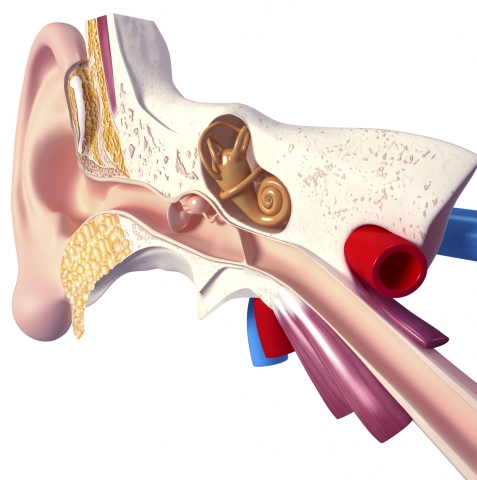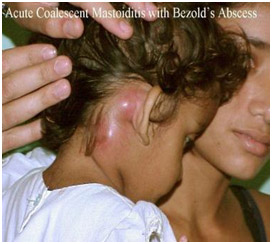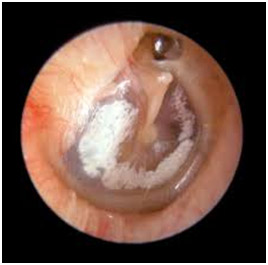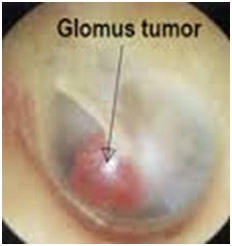
05
Jan
Middle Ear & Diseases Related To It
The middle ear consists of the eardrum (tympanic membrane) and an air-filled chamber containing a chain of three bones themalleus,incus,andstapes that connect the eardrum to the inner ear. The middle ear acts as an amplifier of sound, whereas the inner ear acts as a transducer, changing mechanical sound waves into an electrical signal that is sent to the brain via the nerve of hearing.

Acute Otitis Media
- Inflammation of the middle ear in which there is fluid in the middle ear accompanied by signs or symptoms of ear infection.
- The Eustachian tube is shorter in children than adults which allows easy entry of bacteria and viruses into the middle ear, resulting in acute otitis media.
- Bottle feeding is a risk factor for otitis media.
- Breastfeeding passes immunity to the child that helps prevent acute otitis media.
Signs and symptoms
- Older children: presence of fever
- Earache or ear tugging

Cholesteatoma
- A cholesteatoma is a non-cancerous skin cyst that develops in the middle section of your ear.
- It may be congenital—meaning that you were born with it.
- It can also be caused by repeated ear infections.
- One cause of persistent and recurrent drainage from the ear is in many instances a cholesteatoma; a disease characterized by the presence of skin within the middle ear and or mastoid cavity.
- Not uncommonly this results in erosion of the ossicular chain, (malleus, incus and or stapes) thus increasing the hearing loss.
- The labyrinth or the inner ear structures causing severe to profound hearing loss and severe vertigo (a balance disorder).
- It also may result in facial nerve weakness or paralysis.
- Again, this is not a tumor but rather a disease process that acts locally much as a tumor does.
Symptoms
- Dizziness
- Drainage from the ear
- Hearing loss in one ear

Otosclerosis
- A hereditary disorder causing progressive deafness due to overgrowth of bone in the inner ear.
- People who have otosclerosis have an abnormal sponge-like bone growing in the middle ear.
- This growth prevents the ear bones from vibrating in response to sound waves
- These vibrations are needed in order for you to hear.
- Otosclerosis is the most common cause of middle ear hearing loss in young adults.
- It typically begins in early to mid-adulthood.
- It is more common in women than in men.
- The condition may affect one or both ears.
- Commonly it does not have an equal onset time frame in each ear when it does occur bilaterally.
Symptoms
- Hearing loss (slow at first, but worsens over time)
- Ringing in the ears (tinnitus)
- Vertigo or dizziness
Bezold’s abscess
Bezold’s abscess is an abscess (a swollen area) in the Sternocleidomastoid muscle containing an accumulation of pus.
Symptoms
- Severe pain in perimastoid region
- difficulty of swallowing
- sore throat
- difficulty in breathing
- nuchal rigidity (Neck stiffness, stiff neck)
- fever

Tympanosclerosis
Tympanosclerosis is a condition caused by calcification of tissues in the middle ear, sometimes resulting in a detrimental effect to hearing.
Symptoms
- Hearing loss
- White patches on the middle ear or tympanic membrane.

Glomus Tumors
What are paragangliomas (glomus tumors)?
- Paragangliomas are also called “glomus” tumors.
- These are usually benign, slow-growing but highly vascular tumors that cause symptoms by their.
- Mass effect in small spaces such as the ear,
- High blood flow
- Invasion of adjacent structures
- Secretion of hormones, which is rare.
- As they grow, their mass effect can block sound transmission in the middle ear, causing conductive hearing loss.
- Rarely, these tumors can produce hormones such as adrenaline, which can cause episodes of sweating, flushing, headache, and a rapid heartbeat.


0 comments